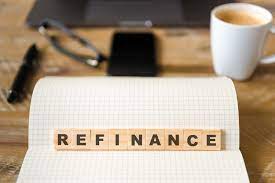Friday, May 21, 2021.
In order to better represent those impacted by the COVID-19 pandemic and the economic recession, the Federal Housing Finance Agency (FHFA), a monitor for the mortgage finance sector, confirmed recently this year that they are bringing in a new refinance option.
They’ll begin offering a new alternative to low-income homeowners with loans guaranteed by Fannie Mae and Freddie Mac. These state mortgage giants back approximately half of all loans in the United States. According to the FHFA, this refinance alternative could save homeowners between $100 and $250 per month on their payments.
Beginning from June 5, 2021, the government will expand mortgage refinancing alternatives for low-income homeowners.
Who Qualifies For The New Mortgage Refinance Option?
According to the FHFA, qualified borrowers could remortgage their home mortgage to reduce their interest rates and bills by an estimated $100 to $250 per month. However, according to the regulator, lenders must save homeowners at least $50 a month to use the refinance scheme.
If you cannot repay the house without a conventional appraisal; investors who use this service must pay up to $500 in appraiser fees upfront. The mortgage lender would be reimbursed for the valuation costs later by Fannie Mae and Freddie Mae.
Many homeowners who were previously ineligible for a mortgage refinance can now do so, thanks to historically low refinance rates. This initiative relaxes the requirements for obtaining a refinance.
Let us talk about the requirements for low-income borrowers seeking a refinance under the new initiative below.
Higher Debt-to-Income (DTI) Ratio:
The low-income refinance alternative allows for a DTI of 65 percent, which is higher than the traditional DTI standard of 43 percent for conventional loans. This ensures that a household’s gross debt cannot reach 65 percent of its total income; including home mortgage, personal loans, student loan debt, car payments, car loans, and other loan balances and debt.
“Knowing that people’s incomes have decreased and that lowering their payment would lower their DTI, it becomes a self-fulfilling prophecy,” said Vishal Garg, CEO and founder of Better.com; a mortgage lender that will sell the latest refinance product.
Lower-income Provisions:
This low-income loan refinance plan is only applicable to borrowers with a low income. As a result, the homeowner’s earnings have to be at or below 80% of the region’s average income.
Overlooked Payments:
Unlike typical mortgage refinances, the applicant can only have one missed payment in their one-year history. Their six-month payment history, however, must disclose all on-time transactions.
- Other conditions include a 3 percent equity interest in the home and a credit score of at least 620.
When the program launched, FHFA Director Mark Calabria said, “Last year saw a surge in refinances, but more than 2 million low-income households did not take advantage of the historic low-interest rates by refinancing.”
He also mentioned, “the government designed this latest refinance option to help qualifying borrowers who have not yet refinanced save between $1,200 and $3,000 a year on their monthly mortgage.”
What’s The Timeline For Refinance Program?
The refinance plan has no fixed end date, but homeowners will have far less time to refinance their loan than that. This is because as refinance rates rise, the advantages of refinancing decrease.
The total loan sum for these refinances, according to Garg, maybe about $150,000. Even a one-percentage-point increase in mortgage rates could result in a $100 increase in payments for that amount. Waiting too long may mean missing out on low interest rates.
This service, according to Garg, can assist at least hundreds of thousands, if not millions, of families in refinancing their mortgages.
Low-income borrowers were excluded from last year’s refinance boom because their income and credit histories stopped them from taking advantage of historically low mortgage interest rates. However, the FHFA’s new refinance program can now allow thousands of people to save money on their mortgages.
So, stop worrying about getting the house you want because the government’s refinance plan prioritizes the citizens with lower incomes.
Generated with WriterX.ai — best AI tools for content creation

